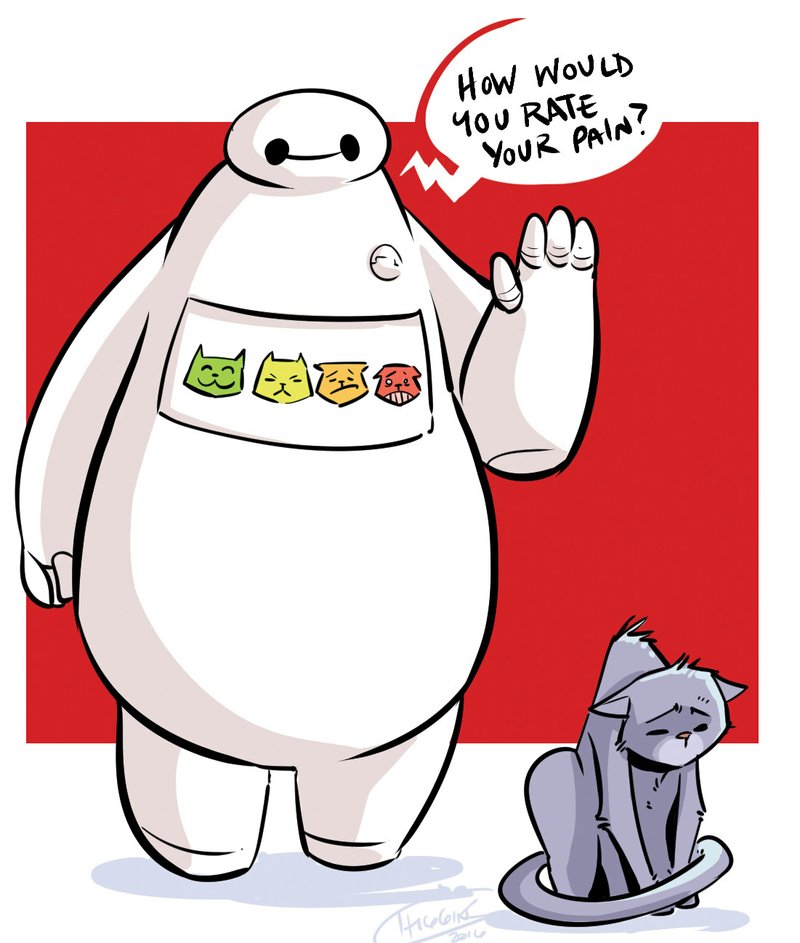Sometimes it feels like guilt goes hand in hand with having a pet. We put a lot of pressure on ourselves to be perfect pet parents, beating ourselves up when we feel we've been remiss about their care in some real or imagined way.
Take pain, for example. Many of us have experienced sinking feelings of self-reproach and remorse when, during a routine veterinary examination, we learn a pet has a health problem that causes ongoing pain -- and we were completely unaware of it.
Sadly, signs of our pets' pain aren't always clear to us so we need to give ourselves a break. Severe pain such as that caused by an injury can be obvious, but the signs of chronic pain can be subtle and easily misread as a pet is slowing down or showing its age.
While our animals cannot describe their pain, they do communicate when something's not right. But we have to know how to interpret the messages they're sending so it helps to have a handy guide such as the one the International Veterinary Academy of Pain Management offers on its website at bit.ly/1fTxs79.
The academy provides a four-point scale for assessing the pain level of cats, dogs and horses. Zero on the scale means a pet is pain free while levels one through four explain symptoms that reveal whether an animal is in mild, moderate or severe pain. Animals of each species show pain and discomfort in their own way.
Cats tend to become more withdrawn and less vocal, revealing discomfort with a subtlety that means their pain could rise to the the third level before it becomes impossible to miss. At level three, a cat might begin shouting its misery to the world by constantly yowling or hissing when left alone. The poor kitty also could growl and hiss when touched.
Most cat owners will know that something's up with the family feline if pain rises to the second level. At that point a cat might spend more time curled up. Or he could be seen sitting with hunched shoulders, lowered head and his tail curled tightly around its body -- his posture making him appear shrunken and even depressed. Mild pain and discomfort, on the other hand, might escape an owner's attention given that the only hints are that the cat is sleeping more or is less interested in what's going on around him.
A dog experiencing mild pain can be as hard to read as a cat, with the only signals of a problem being a bit of restlessness or appearing easily distracted by the surroundings.
When a dog's pain reaches the second level, behavioral symptoms include reluctance to socialize with people and other pets. The dog might also whimper and flinch when touched. Facial expressions also offer insight into how a dog is feeling. Look for arched eyebrows and darting eyes, as well as drooping ears. Symptoms of worse pain are unmistakable -- crying, groaning, chewing at a wound, pulling away or growling when touched.
The academy's equine scale reveals that the position in which a horse holds its head plays a large role in determining its condition. The more a horse hurts, the lower it hangs its head. A horse with discomfort that has risen to level four will drop his head so that it hangs below its withers, or shoulders.
In addition to the assessment charts, the academy provides a glossary explaining medical terminology for many types of pain. For example, the term "acute" sometimes is used by people who aren't medical professionals as a synonym for "severe" when medically it refers to pain that's related to what's happening at the moment, such as pain accompanying an injury or wound. As the wound heals, the pain lessens.
Not all of the glossary definitions are illuminating, such as the one about clinical pain that's written in medical jargon.
As always, it's best to ask a veterinarian to explain anything that isn't clear. Remember, there are no stupid questions, especially when it comes to our pets.
Family on 08/31/2016
